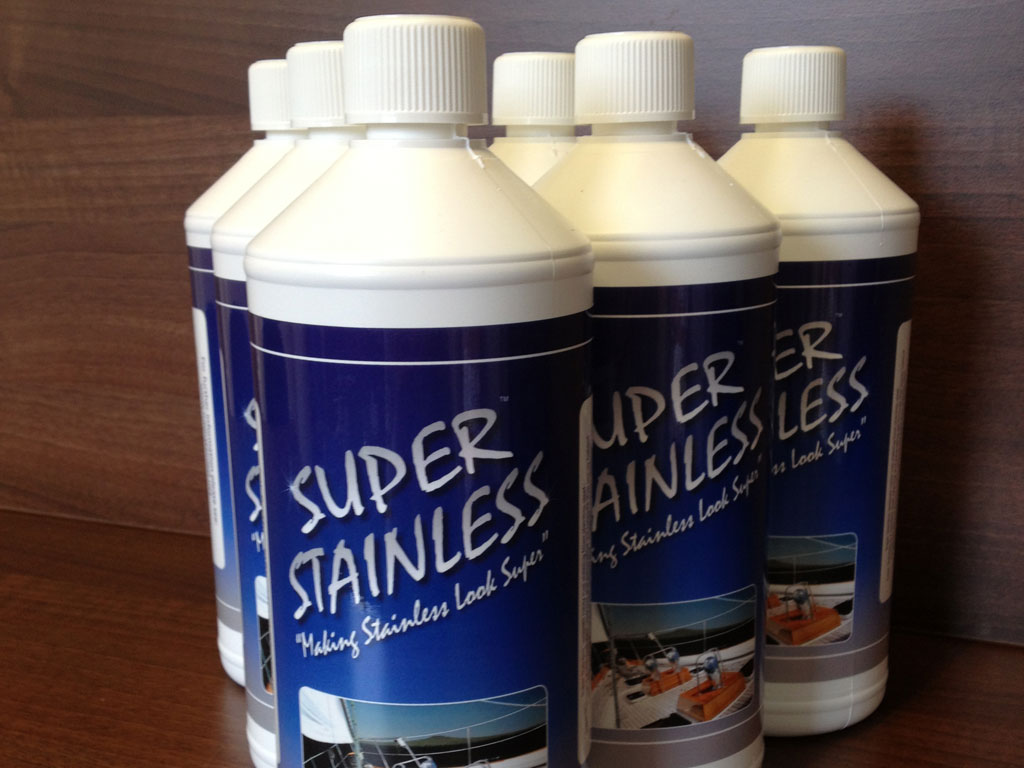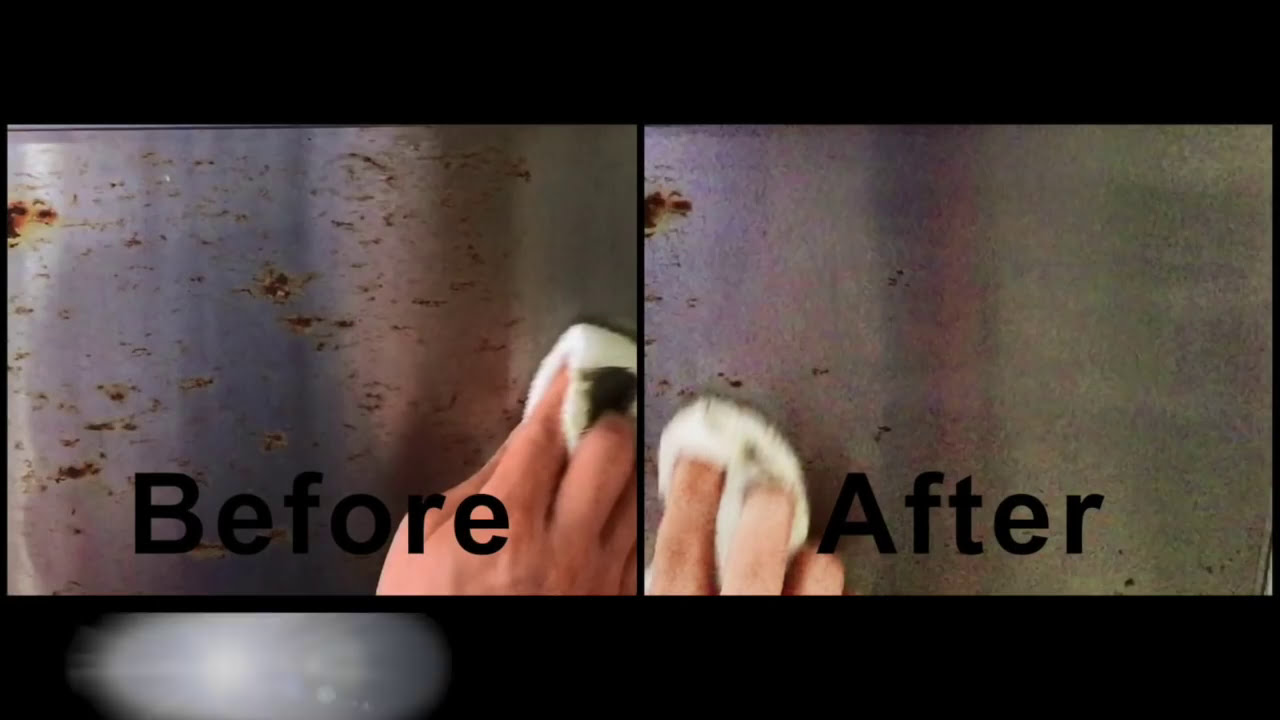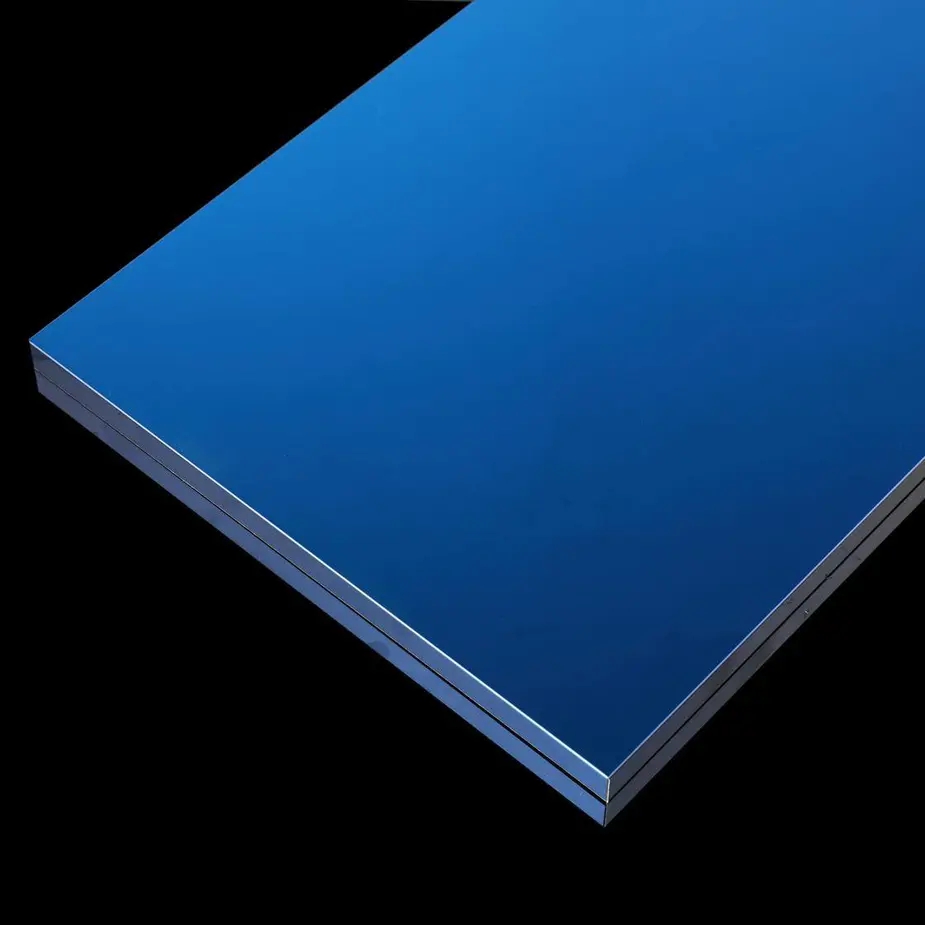Why Stainless Steel Can Rust and the Importance of Addressing It
Stainless steel is renowned for its corrosion resistance and durability, making it a popular choice for various applications, from kitchen appliances and cookware to medical equipment and industrial machinery. However, contrary to its name, stainless steel is not entirely immune to rust formation.
Rust can occur on stainless steel surfaces due to several factors, including:
-
Damage to the Protective Oxide Layer: Stainless steel owes its corrosion resistance to a thin, invisible layer of chromium oxide that forms on its surface. If this protective layer is scratched, chipped, or compromised, the underlying metal becomes susceptible to rust.
-
Exposure to Harsh Environments: Prolonged exposure to harsh chemicals, saltwater, or acidic environments can break down the oxide layer, allowing rust to form.
-
Improper Cleaning and Maintenance: Failure to clean and maintain stainless steel surfaces properly can lead to the accumulation of contaminants, which can facilitate rust formation.
Ignoring rust on stainless steel can have severe consequences, including:
-
Aesthetic Degradation: Rust can significantly diminish the attractive, sleek appearance of stainless steel, compromising its visual appeal.
-
Structural Integrity: Over time, rust can weaken the metal, potentially leading to structural failures or safety hazards, especially in load-bearing applications.
-
Hygiene Concerns: In industries like food and beverage processing, where stainless steel is widely used for its ease of cleaning and sanitation, rust can harbor bacteria and contaminants, posing health risks.
To maintain the integrity, appearance, and functionality of stainless steel surfaces, it is crucial to address rust promptly and effectively. This comprehensive guide will explore various methods for removing rust from stainless steel, ensuring your surfaces remain in pristine condition.
Baking Soda: A Gentle and Effective Rust Remover
Baking soda is a versatile and eco-friendly rust removal solution that is gentle on stainless steel surfaces while effectively tackling light to moderate rust. Here's how to use it:
-
Prepare the Baking Soda Paste: Mix baking soda with water to form a thick, spreadable paste. The ideal ratio is approximately 1/4 cup of baking soda to 2 tablespoons of water.
-
Apply the Paste: Using a soft-bristled brush or a clean cloth, gently apply the baking soda paste to the rusted areas, ensuring even coverage.
Applying baking soda paste to rusted stainless steel surface
-
Let it Sit: Allow the paste to sit on the surface for at least 15-20 minutes. This gives the baking soda time to work its magic and break down the rust.
-
Scrub and Rinse: After the allotted time, use a soft-bristled brush or a non-abrasive scouring pad to gently scrub the paste into the rust. Rinse the area thoroughly with clean water to remove any residue.
-
Dry and Buff: Once the surface is rust-free, dry it completely with a clean cloth or paper towel. For an extra shine, you can buff the area with a microfiber cloth or a stainless steel polish.
Baking soda is an excellent choice for removing light to moderate rust from stainless steel surfaces, such as kitchen appliances, cookware, and utensils. Its mild abrasiveness and chemical properties make it effective at lifting rust without damaging the underlying metal.
Vinegar: A Powerful Rust-Busting Solution
Vinegar, with its acidic nature, is another effective rust removal option for stainless steel. The acetic acid in vinegar helps break down and dissolve rust, making it a popular choice for tackling more stubborn rust stains. Here's how to use it:
-
Prepare the Vinegar Solution: Mix equal parts of white vinegar and water in a spray bottle or a bowl.
-
Apply the Solution: Generously spray or pour the vinegar solution onto the rusted areas, ensuring complete coverage.
-
Let it Soak: Allow the vinegar solution to sit on the surface for at least 30 minutes to an hour. This gives the acetic acid time to penetrate and dissolve the rust.
-
Scrub and Rinse: After the soaking period, use a soft-bristled brush or a non-abrasive scouring pad to scrub the rusted areas. The rust should start to break down and lift off the surface. Rinse the area thoroughly with clean water to remove any remaining vinegar and rust residue.
-
Dry and Buff (Optional): Once the surface is rust-free, dry it completely with a clean cloth or paper towel. For an extra shine, you can buff the area with a microfiber cloth or a stainless steel polish.
Vinegar is an excellent choice for tackling more stubborn rust stains on stainless steel surfaces, such as outdoor furniture, grills, or heavily used kitchen equipment. Its acidic properties make it highly effective at breaking down and dissolving rust, while its natural composition makes it a safe and eco-friendly option.
Commercial Rust Removers: Powerful Solutions for Tough Jobs
For severe rust or large-scale applications, commercial rust removers can be a convenient and effective option. These products are specifically formulated to tackle even the most stubborn rust stains on stainless steel surfaces. Here's how to use them:
-
Choose the Right Product: Select a rust remover specifically designed for use on stainless steel surfaces. Look for products containing oxalic acid, phosphoric acid, or other rust-dissolving agents.

-
Prepare the Surface: Clean the surface to remove any loose dirt, debris, or grease. This will ensure better penetration and effectiveness of the rust remover.
-
Apply the Rust Remover: Follow the manufacturer's instructions for application. Typically, you'll need to apply the rust remover directly to the rusted areas, either by spraying, brushing, or pouring.
-
Let it Work: Allow the rust remover to sit on the surface for the recommended amount of time, as specified by the manufacturer. This will give the product time to penetrate and dissolve the rust.
-
Scrub and Rinse: After the allotted time, use a soft-bristled brush or a non-abrasive scouring pad to scrub the rusted areas. The rust should start to break down and lift off the surface. Rinse the area thoroughly with clean water to remove any remaining rust remover and residue.
-
Dry and Buff (Optional): Once the surface is rust-free, dry it completely with a clean cloth or paper towel. For an extra shine, you can buff the area with a microfiber cloth or a stainless steel polish.
Commercial rust removers are ideal for tackling severe rust on stainless steel surfaces, such as industrial equipment, outdoor furniture, or heavily corroded surfaces. Their powerful formulations are designed to quickly and effectively dissolve even the most stubborn rust stains, making them a valuable tool in the rust removal arsenal.
For Industries: When dealing with rust on stainless steel surfaces in industrial settings, it's crucial to choose the appropriate rust removal method based on the severity of the rust and the specific application. For example, in the food and beverage industry, where hygiene and safety are paramount, eco-friendly options like baking soda or vinegar may be preferred over harsh chemical rust removers. On the other hand, in the medical device industry, where precision and sterility are essential, commercial rust removers or specialized techniques like electrolytic rust removal or ultrasonic cleaning may be more suitable.
Electrolytic Rust Removal: A Specialized Technique
For severe rust or hard-to-reach areas, electrolytic rust removal can be an effective solution. This specialized technique uses an electrical current to dissolve rust without damaging the underlying stainless steel surface. Here's how it works:
-
Prepare the Solution: Mix a solution of sodium carbonate (washing soda) and water in a non-metallic container.
-
Connect the Electrodes: Attach the positive electrode (anode) to the rusted stainless steel surface and the negative electrode (cathode) to a sacrificial metal, such as iron or steel.
-
Immerse the Workpiece: Submerge the rusted stainless steel surface and the sacrificial metal in the solution, ensuring they are not touching.
-
Apply Electrical Current: Connect the electrodes to a low-voltage power source and apply a direct current (DC) for the recommended duration, typically several hours.
-
Rinse and Dry: After the electrolytic process, remove the workpiece from the solution, rinse it thoroughly with clean water, and dry it completely.
Electrolytic rust removal is particularly useful for intricate or hard-to-reach areas where mechanical methods may be ineffective or impractical. It's commonly used in industries like aerospace, automotive, and manufacturing, where precision and surface integrity are critical.
For Industries: Electrolytic rust removal can be an invaluable technique for industries dealing with complex or intricate stainless steel components, such as medical devices, precision instruments, or aerospace parts. This method ensures thorough rust removal without compromising the integrity or functionality of the component.
Ultrasonic Cleaning: A Gentle and Effective Approach
Ultrasonic cleaning is a gentle yet effective method for removing rust from stainless steel surfaces, particularly in delicate or hard-to-reach areas. This technique uses high-frequency sound waves to create cavitation bubbles in a cleaning solution, which dislodge and remove contaminants, including rust.
Here's how ultrasonic cleaning works:
-
Prepare the Cleaning Solution: Choose a suitable cleaning solution based on the type and severity of the rust. Common solutions include mild detergents, rust removers, or specialized ultrasonic cleaning solutions.
-
Load the Ultrasonic Tank: Place the rusted stainless steel components in the ultrasonic tank, ensuring they are fully submerged in the cleaning solution.
-
Set the Parameters: Adjust the ultrasonic frequency, power, and cleaning cycle duration according to the manufacturer's recommendations or the specific requirements of the components.
-
Run the Ultrasonic Cycle: Start the ultrasonic cleaning process, allowing the high-frequency sound waves to create cavitation bubbles that dislodge and remove the rust.
-
Rinse and Dry: After the ultrasonic cleaning cycle is complete, remove the components from the tank, rinse them thoroughly with clean water, and dry them completely.
Ultrasonic cleaning is particularly useful for removing rust from intricate or hard-to-reach areas, as well as delicate or sensitive components that may be damaged by more aggressive rust removal methods. It's commonly used in industries like aerospace, medical devices, and precision manufacturing, where cleanliness and surface integrity are critical.
For Industries: Ultrasonic cleaning can be an invaluable technique for industries dealing with delicate or intricate stainless steel components, such as medical devices, precision instruments, or aerospace parts. This gentle yet effective method ensures thorough rust removal without compromising the integrity or functionality of the component.
Preventing Future Rust Formation
While removing existing rust is essential, preventing future rust formation is equally important. Here are some tips to help maintain the pristine condition of your stainless steel surfaces:
-
Regular Cleaning and Maintenance: Establish a routine for cleaning and maintaining your stainless steel surfaces. Use mild detergents or stainless steel cleaners and avoid abrasive materials that can scratch or damage the protective oxide layer.
-
Proper Drying: Always dry stainless steel surfaces thoroughly after cleaning or exposure to moisture. Leaving water or moisture on the surface can lead to rust formation over time.
-
Avoid Cross-Contamination: Prevent contact between stainless steel and other metals, as this can cause galvanic corrosion and accelerate rust formation.
-
Protect from Harsh Environments: If possible, shield stainless steel surfaces from prolonged exposure to harsh chemicals, saltwater, or acidic environments that can compromise the protective oxide layer.
-
Apply Protective Coatings: In high-risk environments or for outdoor applications, consider applying protective coatings or sealants specifically designed for stainless steel. These can provide an additional barrier against rust and corrosion.
By following these preventive measures, you can significantly reduce the risk of rust formation on your stainless steel surfaces, ensuring their longevity and maintaining their attractive appearance for years to come.
Explore Xinguangyuan's High-Quality Stainless Steel Solutions
At Xinguangyuan, we are committed to providing innovative solutions for various industries, including kitchen appliances, medical devices, elevator decoration, doors, hotel decoration, and hardware. Our expertise in stainless steel processing and surface treatment ensures that our products not only meet the highest standards of quality and performance but also maintain their aesthetic appeal through effective rust prevention and removal techniques.
Discover our extensive range of stainless steel products, including decorative plates, screens, and garnitures in different specifications, designed to meet the unique requirements of your industry. Our advanced surface processing capabilities, such as mirror surface processing, frosting, drawbenching, glazing, and etching, allow us to create customized solutions tailored to your specific needs.
Whether you're seeking rust-resistant stainless steel components for medical devices, durable and visually appealing surfaces for kitchen appliances, or corrosion-resistant materials for outdoor applications, Xinguangyuan has the expertise and resources to deliver exceptional results.
Request a quote for your specific project requirements
By partnering with Xinguangyuan, you can trust that your stainless steel surfaces will maintain their pristine condition, ensuring long-lasting performance, aesthetic appeal, and customer satisfaction.
Conclusion
Rust on stainless steel surfaces can be unsightly and potentially compromise the integrity and functionality of the material. By understanding the causes of rust formation and employing the appropriate rust removal techniques, you can effectively restore the pristine condition of your stainless steel surfaces.
Whether you choose the gentle and eco-friendly approach of baking soda, the powerful acidity of vinegar, or the convenience of commercial rust removers, this comprehensive guide provides you with the tools and knowledge to tackle rust effectively. For more severe or specialized applications, techniques like electrolytic rust removal and ultrasonic cleaning offer targeted solutions tailored to your industry's needs.
Remember, prevention is key to maintaining the long-term beauty and durability of your stainless steel surfaces. By implementing regular cleaning and maintenance routines, proper drying techniques, and protective measures, you can minimize the risk of future rust formation and enjoy the timeless appeal of stainless steel for years to come.
At Xinguangyuan, we are dedicated to providing innovative stainless steel solutions that meet the highest standards of quality, performance, and aesthetic appeal. Explore our extensive product range and surface processing capabilities to find the perfect solution for your industry's unique requirements.


